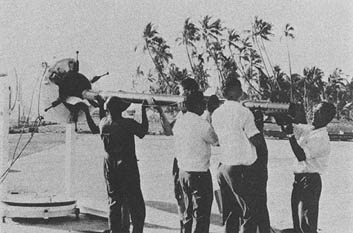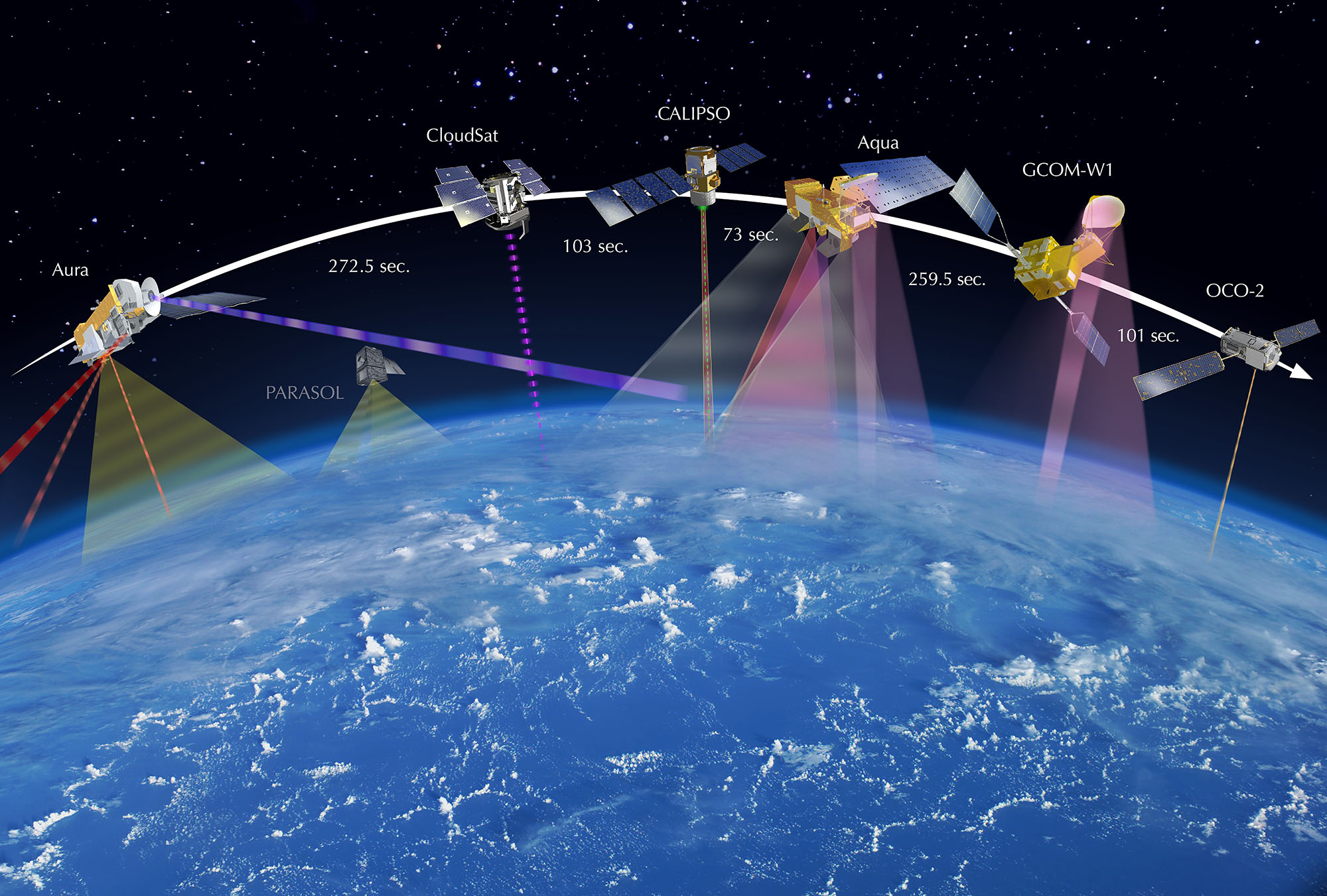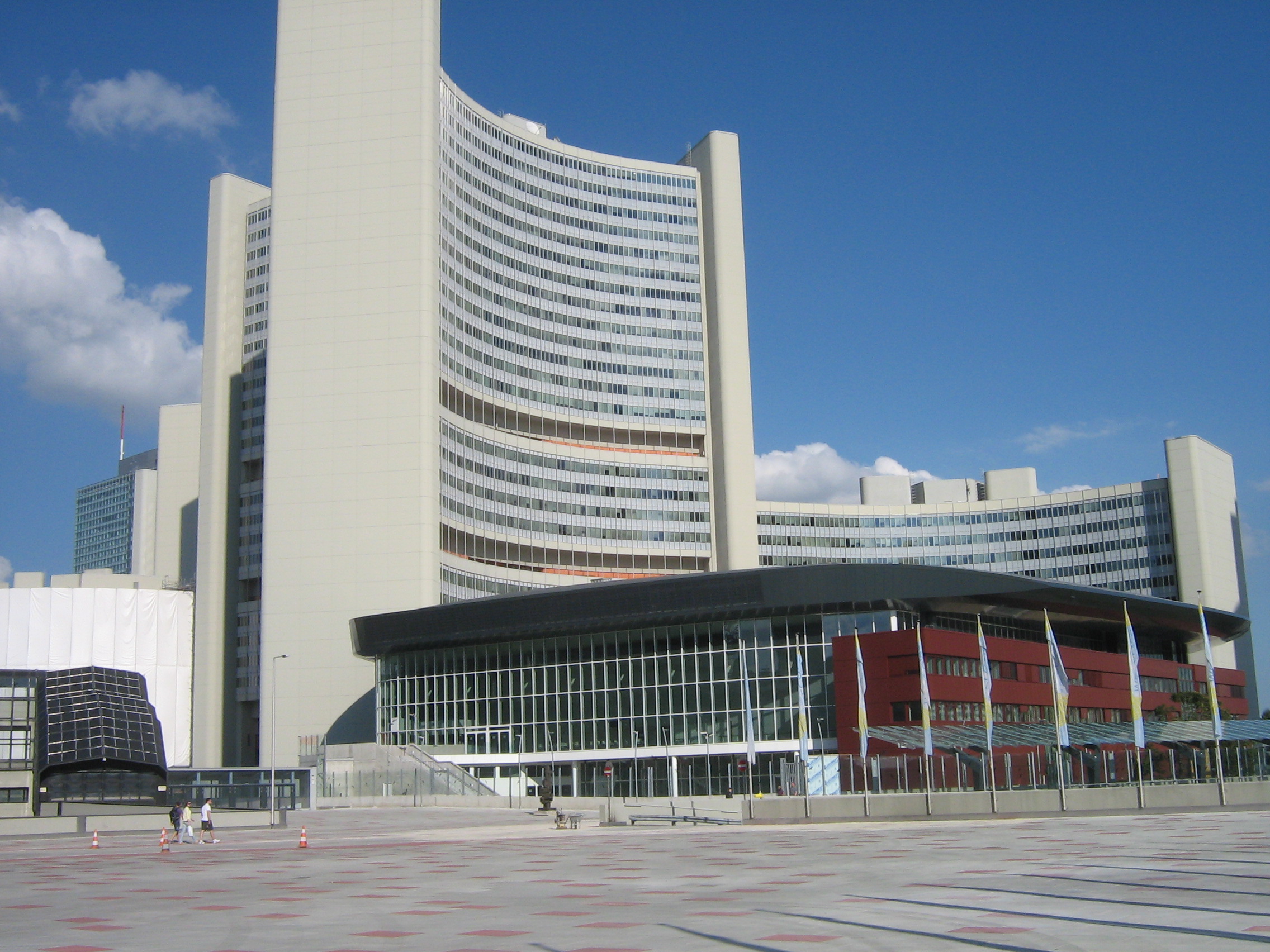|
Cartosat-2
Cartosat-2 is an Earth observation satellite in a Sun-synchronous orbit and the second of the Cartosat series of satellites. The satellite was built, launched and maintained by the Indian Space Research Organisation (ISRO). Weighing around 680 kg at launch, its applications will mainly be towards cartography in India. It was launched by the Polar Satellite Launch Vehicle PSLV-C7 launch vehicle on 10 January 2007. Satellite description Cartosat-2 carries a state-of-the-art panchromatic (PAN) camera that take black and white pictures of the Earth in the visible region of the electromagnetic spectrum. The swath covered by this high resolution PAN camera is 9.6 km and their spatial resolution is less than 1 metre. The satellite can be steered up to 45° along as well as across the track. Cartosat-2 is an advanced remote sensing satellite capable of providing scene-specific spot imagery. The data from the satellite will be used for detailed mapping and other cartograp ... [...More Info...] [...Related Items...] OR: [Wikipedia] [Google] [Baidu] |
List Of Indian Satellites
This list covers most artificial satellites built in and operated by the India, Republic of India. India has been successfully launching satellites of various types from 1975. Apart from Indian rockets, these satellites have been launched from various launch vehicle, vehicles, including American, Russian and European rockets sometimes as well. The organisation responsible for India's space program is Indian Space Research Organisation (ISRO) and it shoulders the bulk of the responsibility of designing, building, launching and operating these satellites. Legend This is a list of Indian (wholly or partially owned, wholly or partially designed and/or manufactured) satellites and orbital space crafts, both operated by the Indian government (ISRO, Indian defence forces, other government agencies) or private (educational and research) entities. All satellite launches marked successful have completed at least one full orbital flight (no sub-orbital flights have been included in this l ... [...More Info...] [...Related Items...] OR: [Wikipedia] [Google] [Baidu] |
Integrated Space Cell
The Integrated Space Cell was the nodal agency within the Government of India which oversees the security of its space based military and civilian hardware systems. It was to be jointly operated by all the three services of the Indian Armed Forces, the civilian Defence Research and Development Organisation and the Indian Space Research Organisation (ISRO). This agency was Superseded by Defence Space Agency. Description The Integrated Space Cell had been set up to utilise more effectively the country's space-based assets for military purposes and to look into threats to these assets. It functioned under the Integrated Defense Services headquarters of the Indian Ministry of Defense. This command leveraged space technology including satellites. Unlike an aerospace command, where the air force controls most of its activities, the Integrated Space Cell envisaged cooperation and coordination between the three services as well as civilian agencies dealing with space. The armed forces ... [...More Info...] [...Related Items...] OR: [Wikipedia] [Google] [Baidu] |
Indian Space Research Organisation
The Indian Space Research Organisation (ISRO; ) is the national space agency of India, headquartered in Bengaluru. It operates under the Department of Space (DOS) which is directly overseen by the Prime Minister of India, while the Chairman of ISRO acts as the executive of DOS as well. ISRO is India's primary agency for performing tasks related to space-based applications, space exploration and the development of related technologies. It is one of six government space agencies in the world which possess full launch capabilities, deploy cryogenic engines, launch extraterrestrial missions and operate large fleets of artificial satellites. The Indian National Committee for Space Research (INCOSPAR) was established by Jawaharlal Nehru under the Department of Atomic Energy (DAE) in 1962, on the urging of scientist Vikram Sarabhai, recognising the need in space research. INCOSPAR grew and became ISRO in 1969, within DAE. In 1972, the government of India set up a Space Commissi ... [...More Info...] [...Related Items...] OR: [Wikipedia] [Google] [Baidu] |
Cartosat
The Cartosat is a series of Indian optical earth observation satellites built and operated by the Indian Space Research Organisation (ISRO). The Cartosat series is a part of the Indian Remote Sensing Program. They are used for Earth's resource management, defence services and monitoring. History The Department of Space (DoS) had launched and managed the IRS series of remote sensing satellites for Earth's resource management and monitoring. These satellites were very successful in providing data in various scales ranging from 1:1 Million to 1:12,500 scale. Each of the IRS missions ensured data continuity while introducing improvements in the spatial, spectral and radiometric resolutions. Considering increased demand for large scale and topographic mapping data, the DoS launched the expanded Cartosat series of remote sensing satellites. The first satellite of the series, Cartosat-1, was launched in 2005. Satellites Cartosat-1 Cartosat-1 was launched by PSLV-C6 on 5 May ... [...More Info...] [...Related Items...] OR: [Wikipedia] [Google] [Baidu] |
Earth Observation Satellite
An Earth observation satellite or Earth remote sensing satellite is a satellite used or designed for Earth observation (EO) from orbit, including spy satellites and similar ones intended for non-military uses such as environmental monitoring, meteorology, cartography and others. The most common type are Earth imaging satellites, that take satellite images, analogous to aerial photographs; some EO satellites may perform remote sensing without forming pictures, such as in GNSS radio occultation. The first occurrence of satellite remote sensing can be dated to the launch of the first artificial satellite, Sputnik 1, by the Soviet Union on October 4, 1957. Sputnik 1 sent back radio signals, which scientists used to study the ionosphere. The United States Army Ballistic Missile Agency launched the first American satellite, Explorer 1, for NASA’s Jet Propulsion Laboratory on January 31, 1958. The information sent back from its radiation detector led to the discovery of the Earth's ... [...More Info...] [...Related Items...] OR: [Wikipedia] [Google] [Baidu] |
ISRO Telemetry, Tracking And Command Network
The Indian Space Research Organisation (ISRO), over the years, has established a comprehensive global network of ground stations to provide Telemetry, Tracking and Command (TTC) support to satellite and launch vehicle missions. These facilities are grouped under ISRO Telemetry, Tracking and Command Network (ISTRAC) with its headquarters at Bangalore, India. Facilities ISTRAC has several facilities as of November 2013: * ISTRAC facilities in Bangalore consist of TTC ground station (BLR) with full redundancy multi-mission Spacecraft Control Center to carry out and control spacecraft operations and co-ordinate with the network stations. Computer facility with distributed architecture providing independent processors for communications handling, dedicated processors to provide real-time displays for individual spacecraft missions and off-line processors for carrying out spacecraft data archival, analysis and orbit determination. * Communication Control facility to establish links betwe ... [...More Info...] [...Related Items...] OR: [Wikipedia] [Google] [Baidu] |
Low Earth Orbit
A low Earth orbit (LEO) is an orbit around Earth with a period of 128 minutes or less (making at least 11.25 orbits per day) and an eccentricity less than 0.25. Most of the artificial objects in outer space are in LEO, with an altitude never more than about one-third of the radius of Earth. The term ''LEO region'' is also used for the area of space below an altitude of (about one-third of Earth's radius). Objects in orbits that pass through this zone, even if they have an apogee further out or are sub-orbital, are carefully tracked since they present a collision risk to the many LEO satellites. All crewed space stations to date have been within LEO. From 1968 to 1972, the Apollo program's lunar missions sent humans beyond LEO. Since the end of the Apollo program, no human spaceflights have been beyond LEO. Defining characteristics A wide variety of sources define LEO in terms of altitude. The altitude of an object in an elliptic orbit can vary significantly along the orbit. ... [...More Info...] [...Related Items...] OR: [Wikipedia] [Google] [Baidu] |
United Nations Office For Outer Space Affairs
The United Nations Office for Outer Space Affairs (UNOOSA) is an office of the U.N. Secretariat that promotes and facilitates peaceful international cooperation in outer space. It works to establish or strengthen the legal and regulatory frameworks for space activities, and assists developing countries in using space science and technology for sustainable socioeconomic development. The Office was established in 1958 to assist and advise the ''ad hoc'' Committee on the Peaceful Uses of Outer Space (COPUOS), which was established by the UN General Assembly to discuss the scientific and legal aspects of exploring and using outer space to benefit humankind. The Committee became permanent the following year, with UNOOSA undergoing several structural changes before its relocation in 1993 to the United Nations Office in Vienna, Austria. As the secretariat of COPUOS, the Office is responsible for helping implement the major international treaties, legal principles, and General Assembl ... [...More Info...] [...Related Items...] OR: [Wikipedia] [Google] [Baidu] |
Hyderabad, Andhra Pradesh
Hyderabad ( ; , ) is the capital and largest city of the Indian state of Telangana and the ''de jure'' capital of Andhra Pradesh. It occupies on the Deccan Plateau along the banks of the Musi River, in the northern part of Southern India. With an average altitude of , much of Hyderabad is situated on hilly terrain around artificial lakes, including the Hussain Sagar lake, predating the city's founding, in the north of the city centre. According to the 2011 Census of India, Hyderabad is the fourth-most populous city in India with a population of residents within the city limits, and has a population of residents in the metropolitan region, making it the sixth-most populous metropolitan area in India. With an output of 74 billion, Hyderabad has the fifth-largest urban economy in India. Muhammad Quli Qutb Shah established Hyderabad in 1591 to extend the capital beyond the fortified Golconda. In 1687, the city was annexed by the Mughals. In 1724, Asaf Jah I, the Mug ... [...More Info...] [...Related Items...] OR: [Wikipedia] [Google] [Baidu] |
Shadnagar
Shadnagar is a Town and assembly constituency in the Ranga Reddy district in Hyderabad, Telangana, India. As part of the reorganisation of districts in Telangana, Shadnagar separated from Mahabubnagar district and merged into Ranga Reddy district Headquarters. Shadnagar is the site of the Indian Space Research Organisation National Remote Sensing Centre. Bill Gates visited the community hospital for an immunization session and administered the polio vaccine to residents in 2002. History Shadnagar was founded between 1869 and 1911 under the sixth Nizam - ''Mir Mahboob Ali Khan Asaf Jah VI, also known as, Sir Mir Mahboob Ali Khan Siddiqi Bayafandi (17 August 1866 – 29 August 1911) was the 6th Nizam of Hyderabad. He ruled Hyderabad state, one of the Princely states in India between 1869 and 1911. Early life Mahboo ...''. References {{Authority control Cities and towns in Ranga Reddy district ... [...More Info...] [...Related Items...] OR: [Wikipedia] [Google] [Baidu] |
National Remote Sensing Centre
National Remote Sensing Centre (Hindi: राष्ट्रीय सुदूर संवेदन केन्द्र), or NRSC, located in Hyderabad, Telangana is one of the centres of the Indian Space Research Organisation The Indian Space Research Organisation (ISRO; ) is the national space agency of India, headquartered in Bengaluru. It operates under the Department of Space (DOS) which is directly overseen by the Prime Minister of India, while the Chairman ... (ISRO). NRSC manages data from aerial and satellite sources. Finances NRSC is mostly financed by State and Central Government funds but also do commercial business by selling satellite images and provide Consultancy to various government, private organisations. According to RTI number: NRESC/R/E/20/00021, revenues and grants values are published for 2014 to 2019 year. References External links * {{Navboxes , list = {{ISRO facilities {{Indian space programme {{Public-sector space agencies {{Auth ... [...More Info...] [...Related Items...] OR: [Wikipedia] [Google] [Baidu] |




